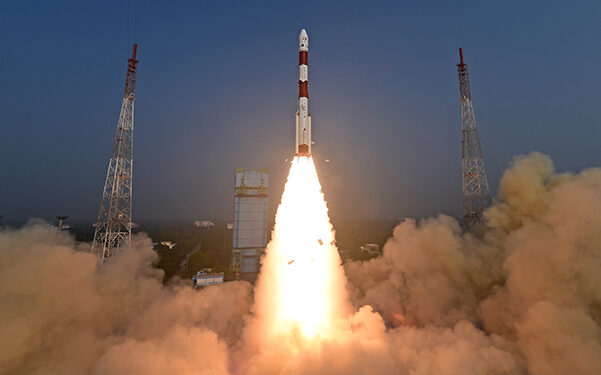NE SCIENCE & TECH BUREAU
NEW DELHI, JAN 1
Prime Minister Narendra Modi on Monday congratulated ISRO’s successful launch of its maiden ‘X-Ray Polarimeter Satellite’ that would offer several insights into celestial objects like black holes, saying this will enhance India’s prowess in the space sector.
2024 lifted off majestically.
XPoSat health is normal.
Power generation has commenced. pic.twitter.com/v9ut0hh2ib— ISRO (@isro) January 1, 2024
ISRO’s ever-reliable Polar Satellite Launch Vehicle (PSLV) in its C58 mission, placed the primary X-Ray Polarimeter satellite XPoSat into a 650 Km Low Earth Orbit as intended after lifting off at the pre-fixed time of 9.10 am from the first launch pad in Andhra Pradesh’s Sriharikota.
In a post on X, PM Modi said, “A great start to 2024 thanks to our scientists! This launch is wonderful news for the space sector and will enhance India’s prowess in this field.” “Best wishes to our scientists at @isro and the entire space fraternity in taking India to unprecedented heights,” he said.
A great start to 2024 thanks to our scientists! This launch is wonderful news for the space sector and will enhance India's prowess in this field. Best wishes to our scientists at @isro and the entire space fraternity in taking India to unprecedented heights. https://t.co/4O4F6kRpEX
— Narendra Modi (@narendramodi) January 1, 2024
Objectives of the mission are:
- To measure polarisation of X-rays in the energy band 8-30keV emanating from about 50 potential cosmic sources through Thomson Scattering by POLIX payload.
- To carry out long term spectral and temporal studies of cosmic X-ray sources in the energy band 0.8-15keV by XSPECT payload.
- To carry out polarisation and spectroscopic measurements of X-ray emissions from cosmic sources by POLIX and XSPECT payloads respectively in the common energy band.
- To study the distribution of magnetic field, geometric anisotropies, alignment with respect to line of sight, nature of accelerator in galactic cosmic X-Ray sources by measuring degree of polarization and its angle.
- Structure and geometry of magnetic field of neutron stars, mechanism of X-Ray beaming and its relation with luminosity and mass of accretion rate of powered pulsars.
- Understanding of galactic black hole binary sources.
- To study and confirm about production of X-Rays is either from polar cap of neutron star or outer cap of pulsar magnetosphere.
- To distinguish the synchrotron mechanism as dominant over thermal emission in Supernova remnants.













